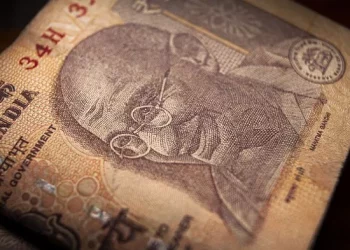It is crucial to shed light on one of the pivotal aspects influencing economic landscapes in Asia – the current exchange rate between the Chinese Yuan (CNY) and the South Korean Won (KRW). In this article, we will delve into the intricacies of the exchange rate, analyzing its current state, factors influencing it, and the potential implications for businesses and investors.
Understanding the Current Exchange Rate
Snapshot of the Current CNY to KRW Exchange Rate
As of the latest update, the exchange rate stands at approximately 165.42 Chinese Yuan to 1,000 South Korean Won. This figure serves as the baseline for our analysis and is subject to market fluctuations.
Historical Trends: Unraveling the Past Year
Reflecting on the past 12 months, we observe a fluctuating trend in the CNY to KRW exchange rate. From a low of 160.25 in March to a high of 168.90 in July, the exchange rate has been responsive to various economic stimuli, offering a nuanced perspective for investors and businesses alike.
Current Exchange Rate Analysis
Market Forces at Play
Several factors contribute to the fluctuations in the CNY to KRW exchange rate. Chief among them are market demand and supply dynamics, geopolitical events, and economic indicators. An in-depth analysis of these forces is essential for predicting future trends.
Impact of Global Trade Dynamics
The ongoing global trade dynamics, especially between China and South Korea, play a significant role in shaping the exchange rate. Trade imbalances, tariffs, and geopolitical tensions can exert pressure on both currencies, resulting in fluctuations that businesses must navigate strategically.
Central Bank Policies
The monetary policies of both the People’s Bank of China (PBOC) and the Bank of Korea (BOK) heavily influence the exchange rate. Interest rate differentials, inflation rates, and currency interventions are key elements that investors closely monitor to anticipate future movements.
Economic Indicators
Examining economic indicators such as GDP growth, unemployment rates, and manufacturing output provides insights into the overall health of each economy. Discrepancies in these indicators between China and South Korea can impact investor confidence, influencing the exchange rate.
COVID-19 and Its Aftermath
The lingering effects of the COVID-19 pandemic continue to reverberate across the global economy. The recovery paths of China and South Korea, their vaccination rates, and the emergence of new variants all contribute to the uncertainty that can impact the exchange rate.
Technological Advancements in Finance
The integration of financial technologies, including blockchain and digital currencies, has introduced new dimensions to currency exchange. China’s digital yuan and South Korea’s experiments with a central bank digital currency (CBDC) could redefine the future landscape of cross-border transactions.
Implications for Businesses and Investors
Export-Import Dynamics
For businesses engaged in cross-border trade between China and South Korea, the exchange rate is a critical factor influencing profit margins. Keeping abreast of the current rate and employing effective risk management strategies is imperative to mitigate currency-related uncertainties.
Investment Opportunities
Investors keen on capitalizing on the CNY to KRW exchange rate fluctuations must adopt a diversified and informed approach. Strategic investments in sectors influenced by bilateral relations and economic policies can yield favorable returns.
Conclusion
It is evident that the CNY to KRW exchange rate remains a dynamic indicator reflecting the complexities of the global economic landscape. Businesses and investors navigating this terrain must stay vigilant, continually monitoring market forces and adapting their strategies to thrive in an ever-evolving environment. The coming months promise further insights into the interplay between China and South Korea, and astute observers will be well-positioned to capitalize on emerging opportunities.
Related Topics:
Understanding the CNY Currency: A Comprehensive Overview
What Is CNY and Its Global Status
Yuan vs. Renminbi: What’s the Difference?




























